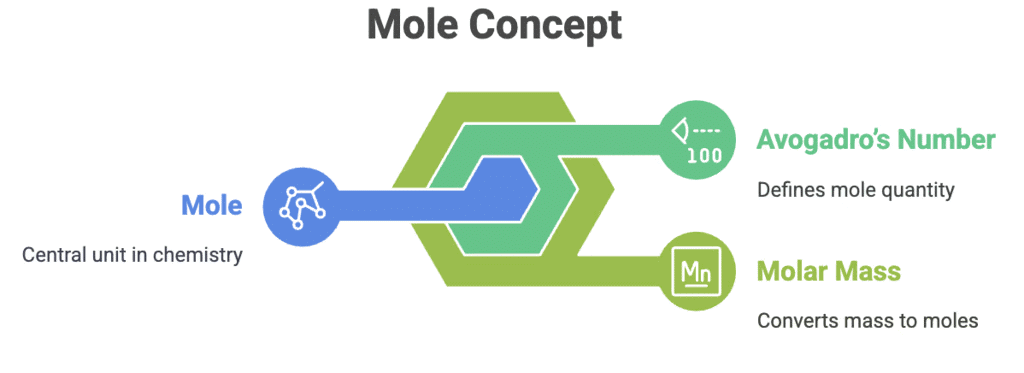Mnemonics: Some Basic Concepts Of Chemistry | Chemistry Class 11 - NEET PDF Download
| Table of contents |

|
| Mole Concept |

|
| Empirical and Molecular Formulas |

|
| Avogadro’s Hypothesis |

|
| Laws of Chemical Combination |

|
Mole Concept
Mnemonic:
"Moles Count, Particles Mount—Avogadro’s Constant is the Amount!"
Explanation:
Moles Count = A mole represents entities (Avogadro's number).
Particles Mount = Moles help relate the number of particles (atoms, molecules) to the macroscopic amount of substance.
Avogadro’s Constant is the Amount = The number of particles in one mole is Avogadro's constant.

Empirical and Molecular Formulas
Mnemonic:
"Empirical’s Simple, Molecular’s True—Find the Ratio for You!"
Explanation:
Empirical’s Simple = The empirical formula represents the simplest whole-number ratio of atoms in a compound.
Molecular’s True = The molecular formula represents the actual number of atoms of each element in a molecule.
Avogadro’s Hypothesis
Mnemonic: "Equal Volumes, Equal Moles—Under the Same Conditions, You Know!"
Explanation:
Equal Volumes = Avogadro’s hypothesis states that equal volumes of gases, at the same temperature and pressure, contain the same number of molecules.
Equal Moles = The number of moles of gas molecules is directly proportional to the volume of the gas at constant temperature and pressure.
Laws of Chemical Combination
Types: Law of Conservation of Mass, Law of Definite Proportions, Law of Multiple Proportions
Mnemonic: "Carmen Defends Mighty Peaks"
Breakdown:
- Carmen - Law of Conservation of Mass
- Defends - Law of Definite Proportions
- Mighty Peaks - Law of Multiple Proportions
Concept of Limiting Reagent
Mnemonic:
"Limiting’s the Key, Reaction’s Bound—Other Reactants Go Around!"
Explanation:
Limiting’s the Key = The limiting reagent is the reactant that is completely consumed first and limits the amount of product formed.
Reaction’s Bound = The amount of product is determined by the limiting reagent.
|
114 videos|263 docs|74 tests
|
FAQs on Mnemonics: Some Basic Concepts Of Chemistry - Chemistry Class 11 - NEET
| 1. What are some effective mnemonics for remembering chemical symbols and formulas? |  |
| 2. How can I use mnemonics to memorize the periodic table's groups and periods? |  |
| 3. What is the significance of mnemonics in preparing for the NEET exam? |  |
| 4. Can you provide some mnemonics for common chemical reactions and equations? |  |
| 5. What are some tips for creating your own mnemonics for chemistry concepts? |  |
















